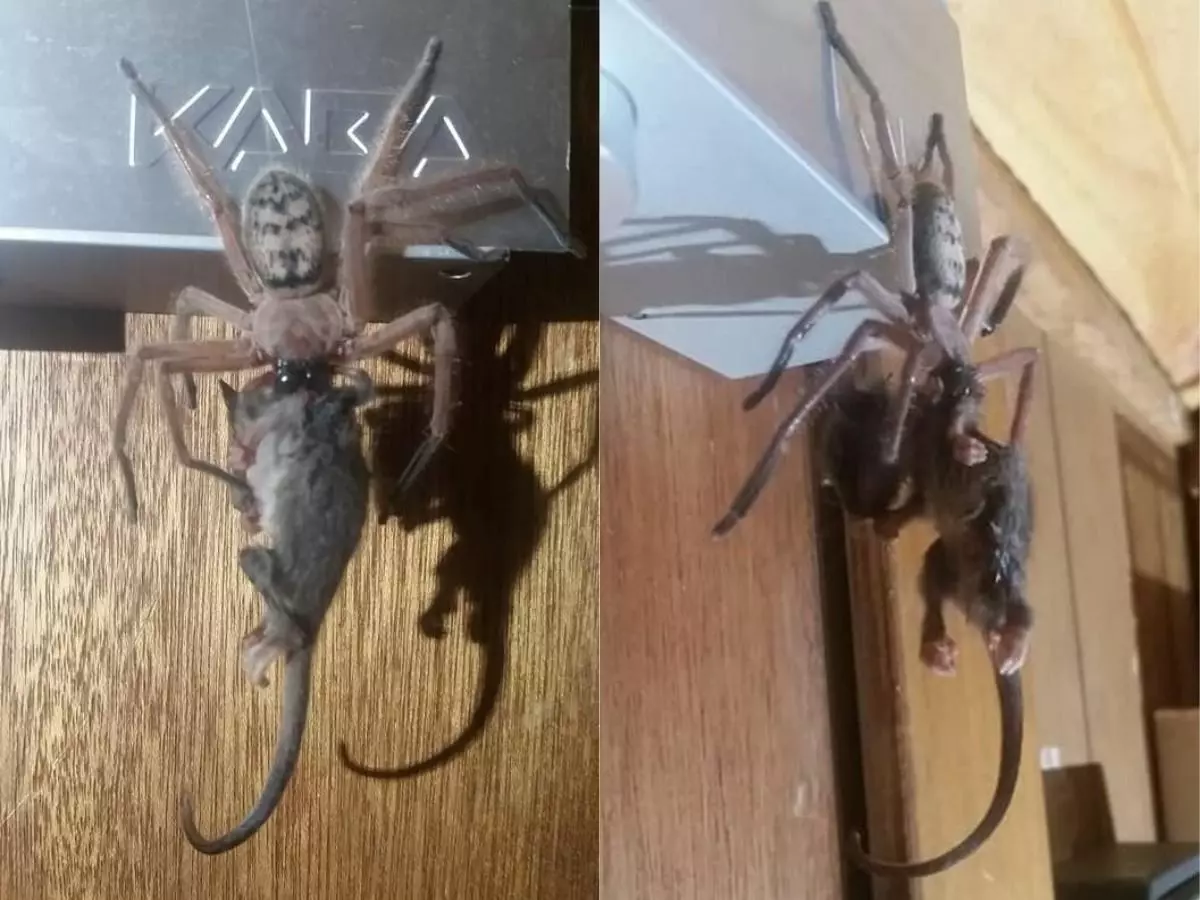Australia Is So Shocking, It Has Spiders That Can Eat Something Like A Large Rat. No Kidding.
Ok, if you have a problem with spiders, you need to click away now and never come back. Because that photo below will absolutely give you nightmares you don¡¯t want anything to do with. And of course, the photo is from Australia.

Ok, if you have a problem with spiders, you need to click away now and never come back.
Because that photo below will absolutely give you nightmares you don't want anything to do with. And of course, the photo is from Australia.

Images courtesy: Justine Latton/FB
That is most certainly a photo of a spider in Australia. The image was captured inside a ski lodge on the island of Tasmania. And no, the arachnid is not chowing down on a tiny rat. It's eating an effing pygmy possum, which can grow up to 11 cm long.
Putting that into perspective, that thing is huge! LOOK AT THE SIZE OF THAT NIGHTMARE FUEL!
A woman named Justine Latton captured the photo of a hunstman spider mid-meal, at a ski lodge in the Mount Field National Park. "Pygmy possums are quite common up there," Latton told Gizmodo. "We reckon the spider probably just saw an opportunity and went for it!"
Huntsman spiders are so named because they're not like other spiders, simply waiting for prey to fall into their webs. They actively stalk their prey, though they typically feed on invertebrates and sometimes larger critters like lizards.

In this case, the spider chowing down on a possum is rare, though it's not unheard of. But if you'd see it anywhere, of course it would be Australia. Sure, they have their share of adorable animals, but they also seem to have most of the deadliest creatures in the world just roaming the plains.
In this case, the onlookers were able to safely relocate the spider outdoors without harming it. It was too late for the poor possum however.
Australia is one of the most biodiverse regions of our planet, with several hundred species of animals and plants found nowhere else. But that biodiversity is under threat, partly due to climate change. According to the University of Sydney, Australia is among the top seven countries worldwide responsible for 60% of the world's biodiversity loss. There are 426 animal species (including presumed extinctions) and 1,339 plants are currently threatened under the Environment Protection and Biodiversity Conservation Act 1999.
